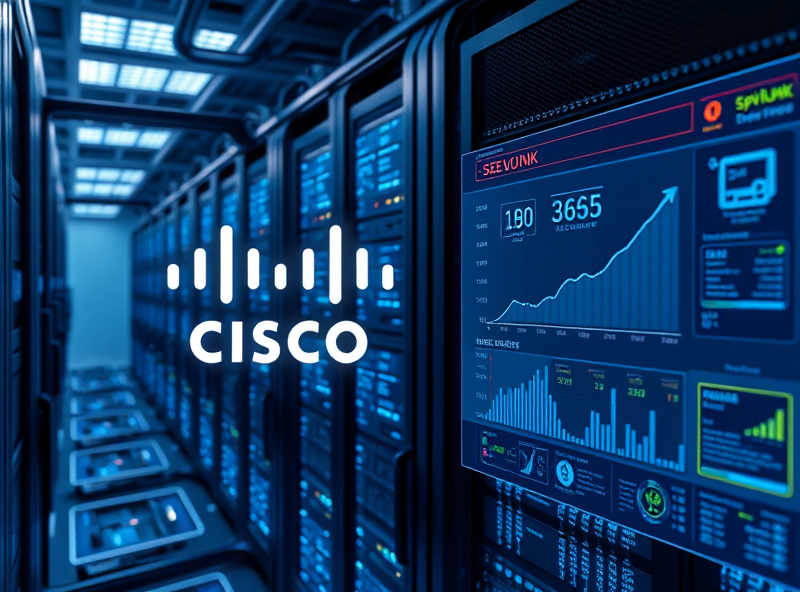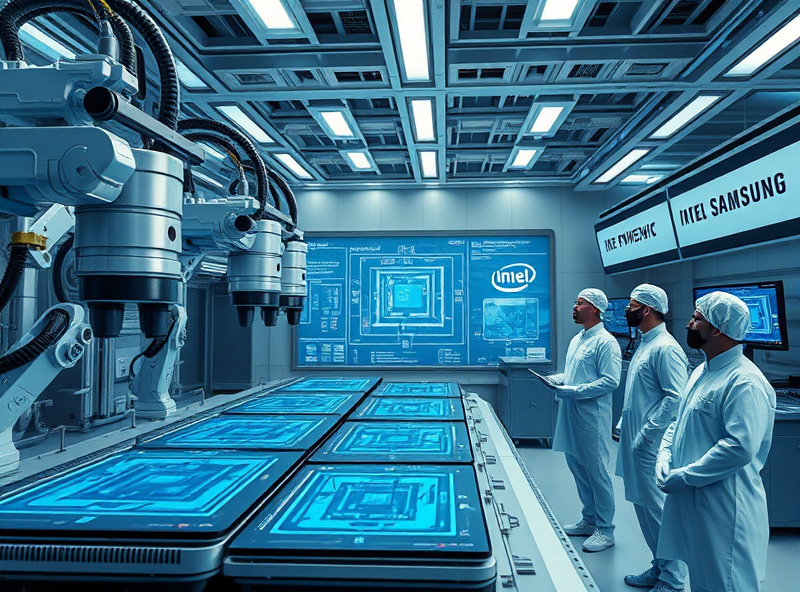
Cisco’s AI Infrastructure Advantage: Growth, Strategy & Outlook
Accelerating AI Infrastructure Orders and Revenue Growth

As artificial intelligence (AI) continues to reshape industries, the demand for robust, scalable AI infrastructure is accelerating at an unprecedented pace. Cisco, a global leader in networking and data center technologies, is strategically positioning itself to capture this growth. Their recent moves in AI infrastructure—particularly in high-performance networking, GPU-optimized data centers, and AI-native architectures—are driving a significant uptick in both orders and revenue.
One of the key reasons behind this surge is the growing enterprise need for low-latency, high-bandwidth environments to support large language models (LLMs), generative AI, and real-time analytics. Cisco’s AI-ready solutions, including their Nexus 9000 series switches and Silicon One chipsets, are designed to meet these exact requirements. These technologies not only enhance performance but also improve energy efficiency and reduce total cost of ownership—an essential factor for enterprises scaling AI workloads.
Moreover, Cisco’s strategic partnerships with hyperscalers and AI hardware vendors like NVIDIA have further strengthened its position. These collaborations allow Cisco to deliver end-to-end AI infrastructure solutions that are both future-proof and easy to integrate into existing enterprise environments.
For businesses and IT leaders, this means faster deployment of AI capabilities, improved ROI on infrastructure investments, and a competitive edge in the digital economy. Cisco’s growth in this area isn’t just about hardware—it’s about enabling smarter, faster, and more sustainable AI adoption across sectors.
For more insights, Cisco’s official AI infrastructure overview can be found here: https://www.cisco.com/c/en/us/solutions/ai-infrastructure.html
Strategic Partnerships with NVIDIA and Global Governments

Cisco is rapidly evolving its AI infrastructure strategy by forming powerful alliances with key industry players and global governments. One of the most impactful collaborations is with NVIDIA, a leader in GPU and AI computing. This partnership enables Cisco to integrate NVIDIA’s cutting-edge AI accelerators into its data center and networking solutions, significantly boosting performance for enterprise AI workloads.
By combining Cisco’s robust networking hardware with NVIDIA’s AI processing capabilities, organizations can deploy scalable, secure, and high-performance AI infrastructure. This is especially beneficial for sectors like healthcare, finance, and manufacturing, where real-time data processing and predictive analytics are critical.
In addition to corporate partnerships, Cisco is also working closely with governments worldwide to support national AI strategies. These collaborations focus on building secure, sovereign AI infrastructure that complies with local data governance and privacy regulations. For example, Cisco is helping countries modernize their digital infrastructure to support smart cities, AI-driven public services, and national cybersecurity frameworks.
These strategic alliances not only position Cisco as a key enabler of AI transformation but also help governments and enterprises accelerate innovation while maintaining control over their data and infrastructure.
For more details on Cisco and NVIDIA’s AI collaboration, you can refer to NVIDIA’s official announcement: https://blogs.nvidia.com/blog/2023/03/21/cisco-nvidia-ai-infrastructure/
Security & AI Integration through Splunk Acquisition

Cisco’s strategic acquisition of Splunk marks a pivotal step in unifying cybersecurity and artificial intelligence to deliver a more resilient digital infrastructure. As AI continues to transform enterprise IT, integrating it with security operations becomes essential—not just for automation, but for proactive threat detection and real-time response.
Splunk, known for its powerful data analytics and security information and event management (SIEM) capabilities, brings a robust platform that can ingest and analyze massive volumes of machine data. When combined with Cisco’s existing security portfolio and AI-driven infrastructure, the result is a highly intelligent system capable of detecting anomalies, predicting breaches, and automating remediation at scale.
This integration is particularly valuable in today’s complex threat landscape. With cyberattacks becoming more sophisticated, organizations need tools that not only react but anticipate. AI-enhanced security platforms can learn from historical data, recognize patterns, and adapt in real time—significantly reducing response times and minimizing damage.
For IT leaders and security professionals, this means improved visibility across the entire network, faster incident resolution, and a more efficient security operations center (SOC). Cisco’s vision to embed AI deeply into its security stack through Splunk’s capabilities is a forward-thinking move that supports both innovation and resilience.
As enterprises face increasing pressure to secure hybrid environments and comply with evolving regulations, the Cisco-Splunk synergy offers a comprehensive solution that aligns with both business agility and security best practices.
For more details on the acquisition, you can refer to Cisco’s official announcement: https://newsroom.cisco.com/c/r/newsroom/en/us/a/y2023/m09/cisco-to-acquire-splunk-to-help-make-organizations-more-secure-and-resilient-in-an-ai-powered-world.html
Challenges and Opportunities in Traditional Portfolio Realignment

As Cisco pivots toward AI infrastructure, traditional portfolio realignment becomes both a strategic necessity and a complex challenge. Legacy products, while still revenue-generating, may no longer align with the company’s long-term vision centered around AI, cloud, and software-defined networking. This shift requires Cisco to make tough decisions—sunsetting older technologies, retraining sales teams, and reallocating R&D resources.
One of the key challenges is managing customer expectations. Many enterprise clients still rely on traditional networking solutions, and sudden changes can disrupt their operations. Cisco must therefore balance innovation with continuity, offering hybrid solutions that bridge legacy systems with AI-powered infrastructure.
On the opportunity side, realignment opens the door to higher-margin, subscription-based services. By transitioning from hardware-centric to software-defined models, Cisco can generate more predictable revenue streams and foster deeper customer relationships. Moreover, this shift enables Cisco to tap into emerging markets like edge computing and AI-powered cybersecurity.
To succeed, Cisco needs a phased approach: clear communication with stakeholders, strategic divestitures, and targeted investments in high-growth areas. The realignment isn’t just about cutting products—it’s about reshaping the portfolio to meet the demands of a data-driven, AI-first world.
For a deeper dive into Cisco’s strategy, refer to their official investor relations page: https://investor.cisco.com/






